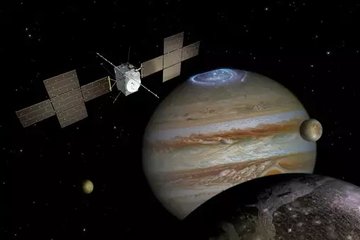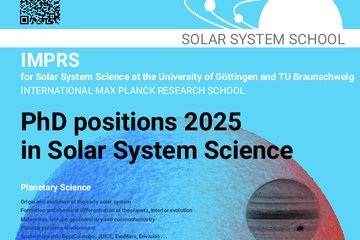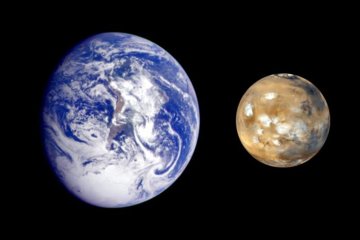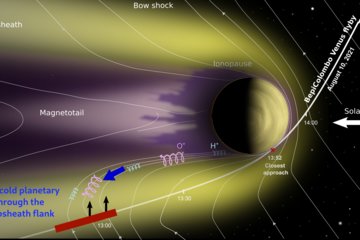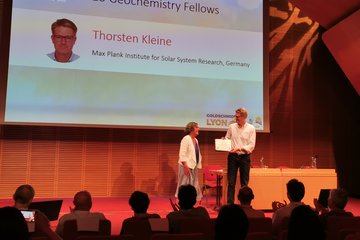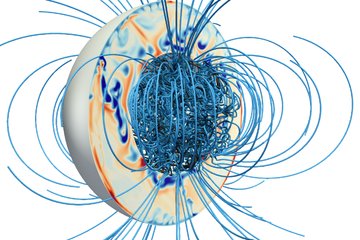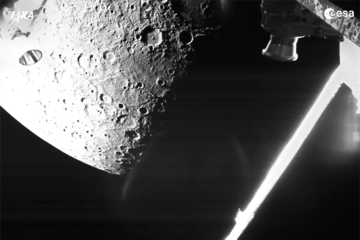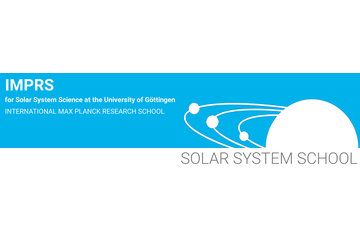From Dust Particles to Planets
Funded by a Starting Grant from the European Research Council, Dr. Joanna Drążkowska simulates the early phases of planet formation.
A new research group has joined the Planetary Science Department at the Max Planck Institute for Solar System Research (MPS) in Germany: as of today, Dr. Joanna Drążkowska heads the group PLANETOIDS - thus adding a new research focus and method to the department. Together with her team, the scientist uses computer simulations to investigate how the building blocks of planets form in the environment surrounding young stars. Over the next five years, the European Research Council (ERC) will support this work with one of its prestigious Starting Grants. The ambitious research project not only provides a glimpse back into the earliest past of our Solar System, but also helps to explain how planetary systems around distant stars came to be.

Stars apparently don't like solitude. Apart from our own Sun, more than 3700 other stars are known to be accompanied by at least one orbiting planet. From a cosmic point of view, the emergence of planetary systems around stars seems to be the rule rather than the exception. That makes it all the more surprising that this process itself is far from being understood - not even for our own Solar System. This is where the new MPS research group PLANETOIDS led by Dr. Joanna Drążkowska comes in.
Dr. Drążkowska's focus is on the early phases of planet formation, which have in the past often been neglected by other models and studies. At the beginning of planetary formation, a disk of dust and gas rotates around a young star. How, when and where do planetesimals, kilometer-sized bodies considered to be the building blocks of planets, form from this dust? "A comprehensive and detailed model that encompasses all phases and processes of early planet formation does not yet exist," Dr. Joanna Drążkowska explains.
More realistic computer models
According to the classical understanding, the dust grains cluster together to form pebbles which in turn gradually merge into larger and larger chunks ? until at the end of this evolution, a Solar System-like planetary system has emerged. However, many new astronomical observations, such as the dust and gas disks of young stars or "typical" exoplanet systems, contradict this very streamlined model.
The goal of the research group PLANETOIDS is therefore to develop computer models that describe the transition of the original building material in the gas and dust disks of young stars to planetesimals more accurately and realistically than before. Factors to be considered include the precise flows within the gas and dust disks, as well as the properties of the dust particles themselves, such as their "stickiness."
"We want to decipher the fundamental principles of early planet formation and understand why and how the very different planetary systems we know today emerged," Dr. Joanna Drążkowska says.
Dr. Joanna Drążkowska studied Astronomy at the Nicolaus Copernicus University of Toruń (Poland). Already in her doctoral studies at the University of Heidelberg (Germany) she turned to the formation of planetesimals. This was followed by research stays at the University of Zurich (Switzerland) and Ludwig Maximilian University in Munich (Germany). Last year, the journal Astronomy & Astrophysics honored her with its Early Career Award. Over the next five years, the European Research Council (ERC) will fund Dr. Joanna Drążkowska's current research project with nearly 1.5 million euros.

